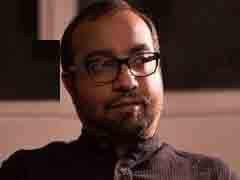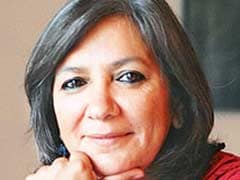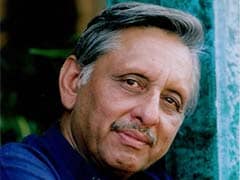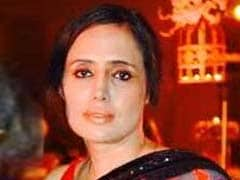- Home/
- 'Mann Ki Baat' With Obama, Tick. But What Else?
'Mann Ki Baat' With Obama, Tick. But What Else?

Shashi Tharoor

As New Delhi braces itself for traffic gridlock during next week's Republic day visit by President Barack Obama, the questions occupying the minds of those in our capital who think about Indo-US relations are much more about India than they are about the US.
Will the visit prove to be, as Prime Minister Modi's visit to Washington last September was universally considered, more about pageantry than substance? What can India get out of its distinguished American visitor, embarking, as all second-term Presidents in their last two years of office do, upon a "lame-duck" period of office, with a hostile Republican majority in Congress and a period of domestic stagnation ahead?
A transactional element is bound to creep into a relationship that has never been short of photo-ops but has delivered little of big-ticket value since the spectacular adoption of the Indo-US nuclear deal by the UPA Government. When Prime Minister Modi went to the US, India had hoped for some announcement of American willingness to aid Indian defence production by offering state-of-the-art equipment to Indian manufacturers. None has been forthcoming.
Since his return to New Delhi, Mr Modi has pushed for 49% FDI in defence. But is that enough to allure American manufacturers? And as long as his party's aberrant Hindutva politics prompts the Opposition to obstruct legislation to make such policy initiatives law, with what credibility will the PM assure American investors of a reliable and predictable environment for them to come in to?
Travelling to New Delhi soon after concluding an agreement with Beijing committing the planet's two biggest economies to concrete carbon-emission targets by 2030, Obama is likely to want to emerge with something similar from his visit here. Modi's India, on the other hand, is in the early stages of a vigorous "Make in India" drive for enhanced manufacturing, which will prove incompatible with reducing emissions to make America happy. Can the contradiction be resolved on this visit?
One way of squaring the circle would be through the transfer of environmentally-friendly green technologies from the US to India at an affordable price. This would help India to become more ecologically-conscious, in line with constant US exhortations, while putting American money (and technology) where its mouth is, and showing sceptical Indians how relations with the US can serve India's direct vital national interests. Can we expect any concrete announcement about progress on this during President Obama's forthcoming visit? The diplomatic auguries are not too encouraging.
Obviously, in terms of what India wants from the unprecedented attendance of a US President at the Republic Day parade, there's more than economics at stake. It is part of our foreign policy mantra to say that each of our bilateral relationships has little to do with any other country. But in fact China and Pakistan cannot be irrelevant to New Delhi's courtship of Washington.
After the snafu of President Xi's visit to India last year, with Chinese troops insouciantly setting up camp on Indian soil, and renewed Chinese belligerence on issues of importance to India from Arunachal Pradesh to military installations in neighbouring countries, there is no doubt that a close strategic partnership with America will help stiffen India's resistance to too much elbowing by its northern neighbour. While some analysts suggest that India's outreach to Obama is a signal that it "needs America's military-industrial muscle on its side" (to quote Chaitanya Kalbag), my own view is that confrontation with China is not in India's interest. But Obama's taking the salute on Republic Day sends a signal to both China and Pakistan that India has a powerful friend in DC.
Of course, when a US President expends the time and energy to visit a foreign country, he expects something out of it too. But on concrete issues where Americans want deliverables from India - removing barriers to trade and investment, easing the entry of US nuclear businesses and pharmaceutical companies - it is unclear how much Mr Modi can do to overcome resistance in the bureaucracy and the political class. On nuclear liability, notably, the onerous clauses in the current law had been introduced by his own party in Parliament.
On pharma, Mr Modi's surrender to American dictates had already been announced before he went there last year, much to the dismay of Indian patients who will now have to pay much for patented American medicines that they have been getting in generic form at a tenth the price. But if he hoped for some goodwill from his American visitor on that issue, the denial of a patent in India for a hepatitis-C drug by the US pharma company Gilead just before Obama's visit has queered the pitch, ensuring some tough talk between the delegations next week.
One possible area of convergence between the two chief executives is their shared commitment to help translate Mr Modi's promises of transforming India's demographics into a major economic success story for a free-market democracy. Here President Obama's State of the Union address on Tuesday 20th January made some relevant points: "21st century businesses need 21st century infrastructure," he said, in words that sound like his Indian counterpart's: "modern ports, stronger bridges, faster trains and the fastest internet." Foreign policy could help: Obama exhorted his America to "combine military power with strong diplomacy [and to] leverage our power with coalition building." This is where his outreach to India fits in.
New Delhi will never become formally a part of any US-led coalition; our national prickliness will ensure that words like "ally" are never used, but "partner" could acquire a strategic dimension. Might New Delhi commit to more joint military exercises and military-technology agreements with the U.S.? That would be detail worth looking out for in any joint communique that might emerge from the Obama visit.
Despite the lack of headline-making breakthroughs in recent years, Indo-US relations have typically hummed along most effectively beneath the surface - in dozens of working groups on co-operation in such areas as education and science and technology, and in continuing people-to-people exchanges across the board that give relations with the US a depth that our other bilateral relationships currently lack.
The media will focus on feel-good stories like President Obama's joining Prime Minister Modi's "mann ki baat" radio address, but it is really in these unspectacular ways that the real progress between New Delhi and Washington, DC is made.
For anything bigger, Mr Modi and his team will have to work a lot harder for results than they have done so far.
Disclaimer: The opinions expressed within this article are the personal opinions of the author. NDTV is not responsible for the accuracy, completeness, suitability, or validity of any information on this article. All information is provided on an as-is basis. The information, facts or opinions appearing in the article do not reflect the views of NDTV and NDTV does not assume any responsibility or liability for the same.
................................ Advertisement ................................
Opinion
MoreOpinion: China Has Helped India's Cause With TrumpMihir Sharma, Bloomberg
Thursday June 29, 2017Very little was expected in India from Prime Minister Narendra Modi's visit to the U.S., and for good reason: Modi had gone out of his way to cultivate a personal relationship with Barack Obama, including famously pouring out a cup of tea for him and the cameras when Obama visited India.
Opinion: Modi's US Speech Was Letter Perfect, Ticked Off Every BoxAshok Malik
Friday June 10, 2016Without taking recourse to the old wailing sheet and cribbing to everyone about Islamabad, Modi has devised a mechanism to shape the debate to India's advantage.
Opinion: Modi Ignored Advice To Make Obama Squirm. It Has Paid Off.Jyoti Malhotra
Saturday June 04, 2016The visit to the US in the coming week, in fact, brings Obama's relationship with both Modi and India full circle.
Blogs: कादम्बिनी के कीबोर्ड से : क्या परमाणु करार पर पीछे हटे हम?
Sunday February 08, 2015असल में परमाणु रिएक्टरों में हादसे की सूरत में जो हर्जाना होगा, वह रिएक्टर चलाने वाले को यानि ऑपरेटर को देना होगा। कानून में यह प्रावधान है कि अगर ऑपरेटर चाहे तो वह सामान और ईंधन आपूर्ति करने वाले पर हर्जाने के लिए दावा कर सकता है। लेकिन यहां पर समझने वाली बात यह है कि ऑपरेटर कौन होगा।
Opinion: Mani-Talk: Modi is Turning Us into America's New PakistanMani Shankar Aiyar
Thursday February 12, 2015In "Cold War II", battlefield could be India, writes Mani Shankar Aiyar.
Opinion: Obama Had Pointed Message for Modi 2.0Shashi Tharoor
Wednesday January 28, 2015Clear warning that PM will fail if he reverts to Modi 1.0, writes Shashi Tharoor.
Opinion: What Pakistan Makes of Obama-Modi ChemistryMehr Tarar
Tuesday January 27, 2015Acceptance of Modi's goal-oriented leadership, writes Mehr Tarar.









